MiniBridge Basics
MiniBridge is Bridge without complex bidding systems. It’s a great way to learn Bridge but also a fun game in itself.
Choosing the Declarer
Instead of using an auction like Bridge, MiniBridge uses what was dealt to determine who decides which suit will be trump (known as the declarer). All players first count and share the high-card points (HCP) in their hand according to the following table.
| Rank | HCP |
|---|---|
| Ace | 4 |
| King | 3 |
| Queen | 2 |
| Jack | 1 |
The team with the most HCP becomes the declaring team. If there is a tie (each team has 20) the cards are re-dealt. The player on the declaring team with the most individual HCP becomes the declarer. If there is a tie, the first partner clockwise starting at the dealer is the declarer.
Revealing Cards
Once chosen, the partner of the declarer turns their cards face-up for everyone to see. Their hand is known as the dummy hand and will be played by the declarer. This differs from regular Bridge where their hand is not revealed until after the first card is played.
Deciding the Contract
Now the declarer uses both their own hand and their partner’s to decide the “contract” — which suit will be trump (if any) and how many tricks beyond six they will attempt to take. E.g. “4♠” means the team will try to take 10 tricks with Spades as trump and “3NT” means they will try to take 9 tricks with no trump.
In MiniBridge the declarer typically only chooses to play in partscore (1NT, 1♠, 1♥, 1♦ or 1♣) or game (3NT, 4♠, 4♥, 5♦ or 5♣) but slam bids (at the 6 or 7 level) and other variations are optionally supported.
Play of the Hand
Once the contract has been decided, the player to the left of the declarer “leads” by playing the first card to the trick — then play continues clockwise — matching the suit of the led card if possible. The declarer plays both their own hand and their partner’s face-up hand on the appropriate turn.
Once all four hands have played a card, the highest card played in the same suit as the led card takes the trick (with 2 being low and Ace high). That is, unless a card in the trump suit was played — then the highest played trump wins instead. The player who played the winning card then chooses a card to lead the next trick and play continues clockwise.
Scoring
Points are awarded based on the chosen contract and how many tricks were taken. The choice of trump suit affects how many points each trick is worth and successfully making higher-level “game” contracts results in more bonus points.
See the following two tables for the total amount taking a certain number of tricks is worth in each partscore/game contract.
Partscore Scores
| Tricks | 1NT | 1♠ / 1♥ | 1♦ / 1♣ |
|---|---|---|---|
| 7 | 90 | 80 | 70 |
| 8 | 120 | 110 | 90 |
| 9 | 150 | 140 | 110 |
| 10 | 180 | 170 | 130 |
| 11 | 210 | 200 | 150 |
| 12 | 240 | 230 | 170 |
| 13 | 270 | 260 | 190 |
Game Scores
| Tricks | 3NT | 4♠ / 4♥ | 5♦ / 5♣ |
|---|---|---|---|
| 9 | 400 | — | — |
| 10 | 430 | 420 | — |
| 11 | 460 | 450 | 400 |
| 12 | 490 | 480 | 420 |
| 13 | 520 | 510 | 440 |
If the declarer fails to make their contract, the opposing team scores 50 points for each trick the declarer was short instead.
End of Game
MiniBridge typically ends at 1000 points, but variations support other game over scores plus playing to a fixed number of hands instead.
Bridge House Rules Options
For supported house rules, see Bridge Basics.
